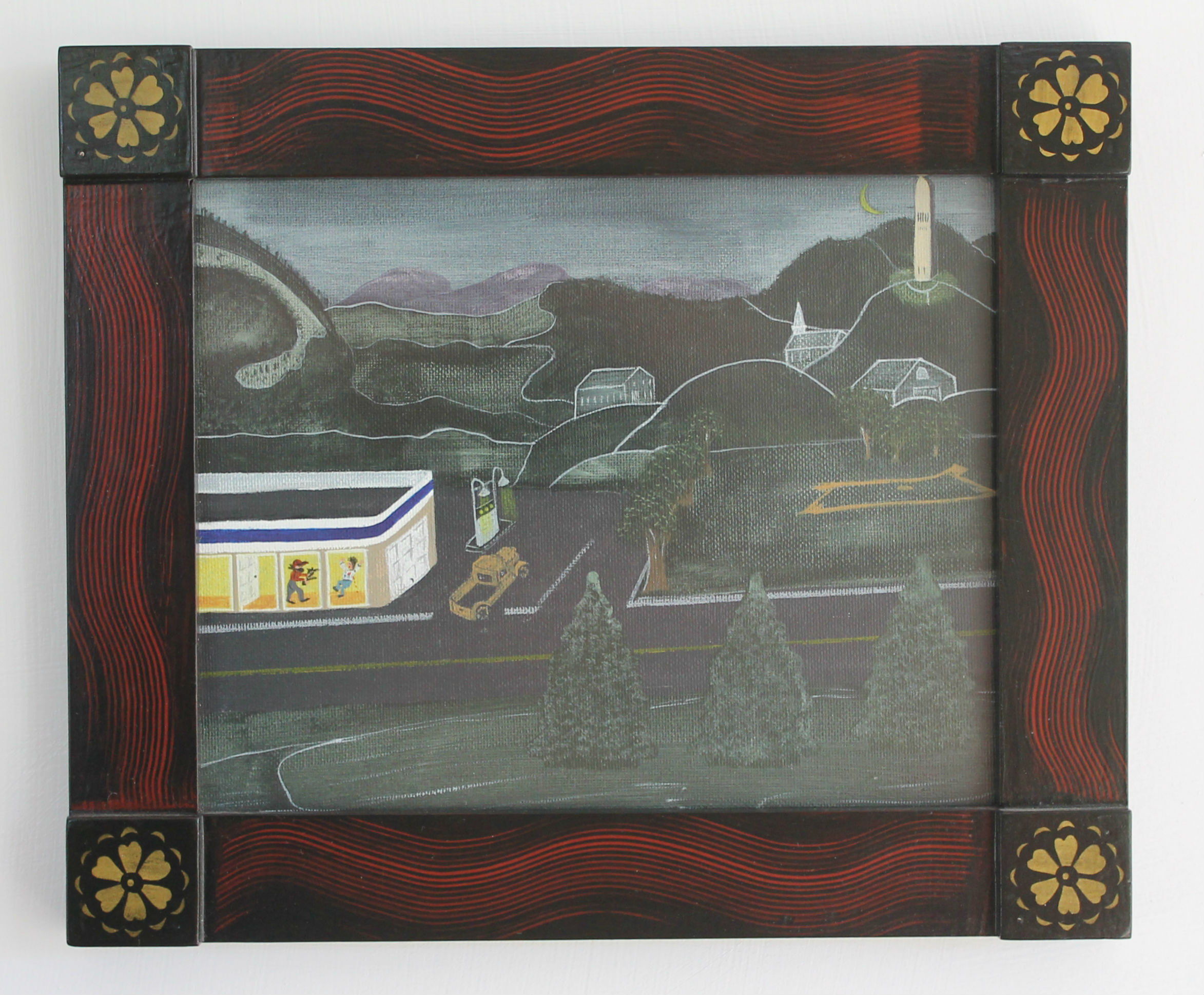Dr. Eleanor McQuillen’s Crime Scene Painting Lost to the Darkness of a Dark Heart
Anyone with a passing understanding of Vermont’s history and geography can locate this crime scene. Surrounded by a series of rolling hills is the easily identifiable Bennington Battle Monument, with its characteristic slotted openings at the observation level. Like her second painting Murder and Man’s Best Friend, this painting focuses on a specific crime. In this case it is an armed robbery at a Bennington gas station that resulted in a homicide. Unlike her earlier painting, this painting depicts the actual crime, not what she witnessed when she rolled up on the scene.
This late-night crime challenged her usual approach to showing the surrounding environment. How do you render a landscape in the dark of the night? She uses a soft white line to evoke how the starlight frames the hills and structures, the kinds of fleeting details you see as you drive down dark country roads.
The frame reflects my mom’s stenciling prowess and her interest in early American decorative techniques.
The clues in next week’s crime scene painting tell the tale in A Deer? Oh Dear!
Adopt a detective’s perspective when looking at this painting and use three simple questions to frame a class discussion.
- What is going on in this picture?
- What do you see that makes you say that?
- What more can we find?
Decide if and when to share the title of the painting as it may guide, or overly influence, the way students view the work. You will also need to decide if it is beneficial to share the back story that this is a crime scene painting and is painted by one of the crime scene investigators for her child as a way to share life’s thoughts and lessons.
This title offers an opportunity to discuss homonyms.


Comments are closed, but trackbacks and pingbacks are open.